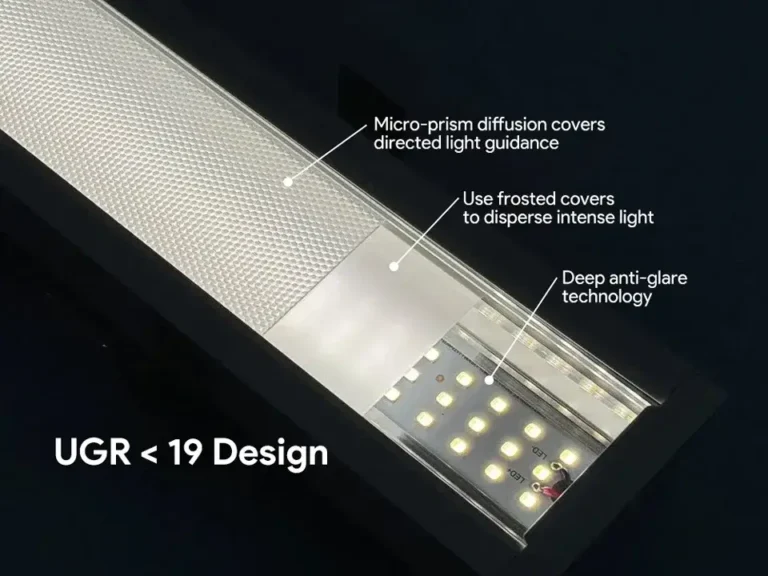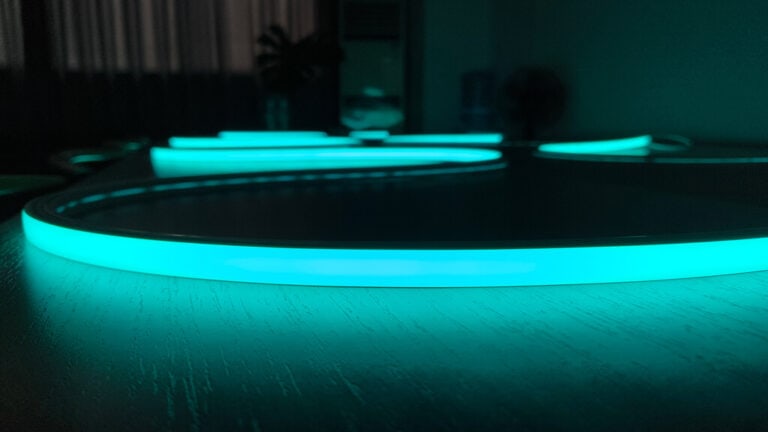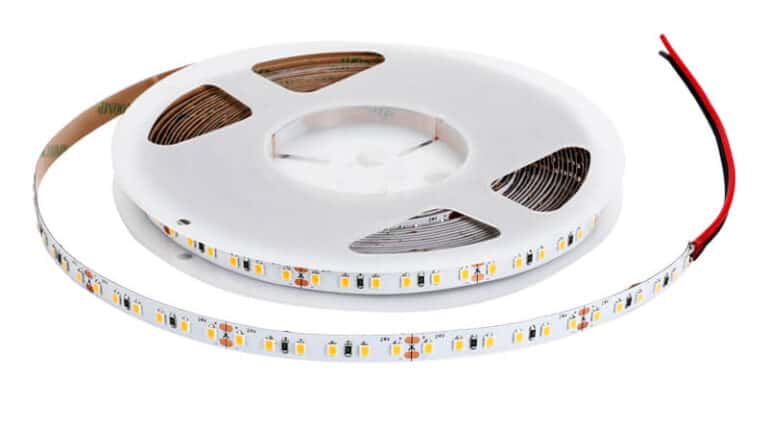In modern lighting design, LED light strips have become a popular choice for home, commercial, and project decoration due to their flexibility and energy efficiency. However, faced with the two voltage specifications of 12V and 24V, many consumers often find themselves confused: which one is more suitable for their needs?
The voltage difference not only affects the strip’s power and brightness performance but also impacts transmission distance stability, heat dissipation requirements, and safety. 12V LED light strips are renowned for their low voltage and minimal power loss, making them ideal for short-distance decor and low-power scenarios. Conversely, 24V strips offer superior voltage stability, giving them an edge in long-distance installations and high-power applications.
This guide reviews the core differences between the two voltages—from voltage characteristics and power performance to real-world applications—providing clear selection criteria to help you create your ideal lighting environment.
Why is the voltage selection for LED strips crucial?
In the realm of LED lighting, details determine success or failure. While we often focus on luminous efficacy, color rendering index, and color temperature, we tend to overlook one of the most fundamental parameters—operating voltage. Choosing between 12V LED light strip and 24V is far from a simple numerical game.
The voltage selection for LEDストリップライト directly impacts project reliability and system costs, manifesting in the following aspects:
- 効率性: Voltage directly influences power output. At the same power rating, 24V light strips draw lower current, resulting in less line loss and higher energy efficiency. Conversely, LED 12V light strips carry higher current, leading to increased heat generation and reduced efficiency over long distances.
- 安定性: 24V voltage drops are smaller, making it ideal for installations exceeding 5 meters in length while maintaining uniform brightness. 12V LED light strip performs stably over short distances (<3 meters) but requires a segmented power supply for longer runs to prevent dimming at the ends.
- 安全性: 12V is a safe voltage, offering greater safety in damp environments, though higher current may require thicker wiring. 24V has lower heat dissipation pressure but requires attention to insulation protection.
- アプリケーション: A 12V LED light strip is suitable for home decoration and small-scale lighting; 24V is commonly used in commercial projects and large-scale lighting applications, balancing cost and effect.
Selecting the appropriate voltage optimizes performance, extends lifespan, and reduces maintenance expenses.
What’s the difference between 12V and 24V LED strips?
Both 12V LED light strip and 24V light strip fall under low-voltage DC LED strips. They both require an LED driver to convert household 220V AC (or 110V) into the low-voltage DC power needed by the strip. Therefore, what’s the core difference?
Circuit Structure Differences
As shown in Figure 1 below, this is the circuit diagram for a 12V LED light strip: The diagram reveals that a 12V strip forms a “minimum lighting unit” consisting of 3 LED chips and 1 resistor. This unit is then repeated in parallel along the entire strip. It’s like a city with many independent neighborhoods, each generating and using its own power.
The advantage of 12V LED light strip is that each trio of LEDs forms an independent unit connected to the power supply’s positive and negative terminals. Even if one unit’s LEDs fail, it won’t affect the illumination of other units. The disadvantage is that each unit requires a resistor. More resistors mean greater overall heat generation and slightly higher energy consumption.

Figure 2 below shows the circuit diagram for a 24V LED strip: Each “minimum lighting unit” consists of 6 LED chips and 1 resistor. This unit is then replicated in parallel.
The advantage of 24V LED light strip is that fewer resistors are required to drive LEDs compared to LED 12V light strips. Both diagrams drive 30 LEDs: the 24V strip uses only 5 resistors, while the 12V strip requires 10 resistors. Thus, the 24V strip uses fewer resistors, resulting in lower overall heat generation, higher energy efficiency, and a relatively longer lifespan.
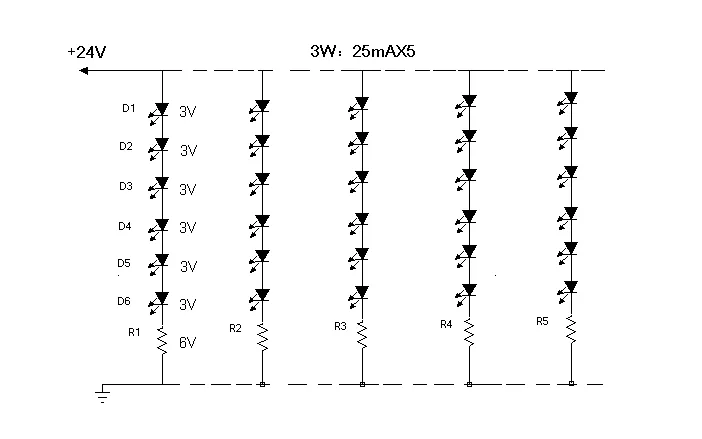
Current Strength Variation
Power calculation formula: Power (P) = Voltage (V) × Current (I). Suppose we have a 24W LED strip:
At 12V, it requires a current of I = P / V = 24W / 12V = 2A;
At 24V, it requires a current of I = P / V = 24W / 24V = 1A.
At the same power output, the 24V strip requires only half the current of the 12V LED light strip! Lower current means less heat generated by line resistance (Q=I²Rt) and reduced energy loss. This makes 24V strips more efficient for long-distance transmission, with lower cable heating, reduced line losses and heat generation, and improved system stability.
Current is like traffic flow on a highway. Less traffic means smoother flow and fewer issues. The lower current of 24V strips allows for fewer transformers and smaller wire gauges during long-distance installations (thinner wires suffice due to lower current), potentially reducing overall costs.
Cutting Length Differences
With the same number of LEDs, the cutting point spacing for 12V LED light strip is half that of 24V strips. As shown below, both strips contain 120 LEDs per meter. The 12V strip has a cutting point every 25mm, while the 24V strip has one every 50mm. This is because the 12V strip can be cut every 3 LEDs, whereas the 24V strip, due to its structure, can be cut every 6 LEDs. If your project involves many tight corners or requires precise cutting, the 12V LED light strip offers greater flexibility.

Brightness Differences
There is no difference in illumination brightness between 12V LED light strip and 24V LED strip. Voltage does not determine light output. Instead, other factors, such as LED quality, influence brightness.
Voltage Drop Differences
Voltage drop is the greatest enemy of low-voltage LED strips. As current flows through copper wires, voltage loss occurs due to the wire’s inherent resistance. This results in lower voltage and dimmer lighting further from the power source, potentially causing color discrepancies.
The following table shows random voltage drop test data for SignliteLED 12V and 24V light strips:
| 12V vs 24V voltage drop data test table | ||||||||||||
| 長さ | 0M | 1M | 2M | 3M | 4M | 5M | 6M | 7M | 8M | 9M | 10M | Unit |
| 12V LED Strip | 12.00 | 11.61 | 10.82 | 10.07 | 9.46 | 9.01 | 8.69 | 8.45 | 8.27 | 8.17 | 8.04 | V |
| 24V LEDストリップ | 24.00 | 23.91 | 23.42 | 22.77 | 22.02 | 21.28 | 20.59 | 19.94 | 19.38 | 18.89 | 18.46 | |
As shown in the table above, the strip starts at DC12V but drops to 8.04V after a 10-meter transmission distance, representing a 33% voltage decay—a very noticeable voltage drop phenomenon. The 24V strip starts at 24V and drops to 18.46V after 10 meters, a 23% voltage drop. This shows the 24V strip exhibits approximately 10% less voltage drop than the LED 12V light strips. Otherwise, visible dimming occurs at the end points.
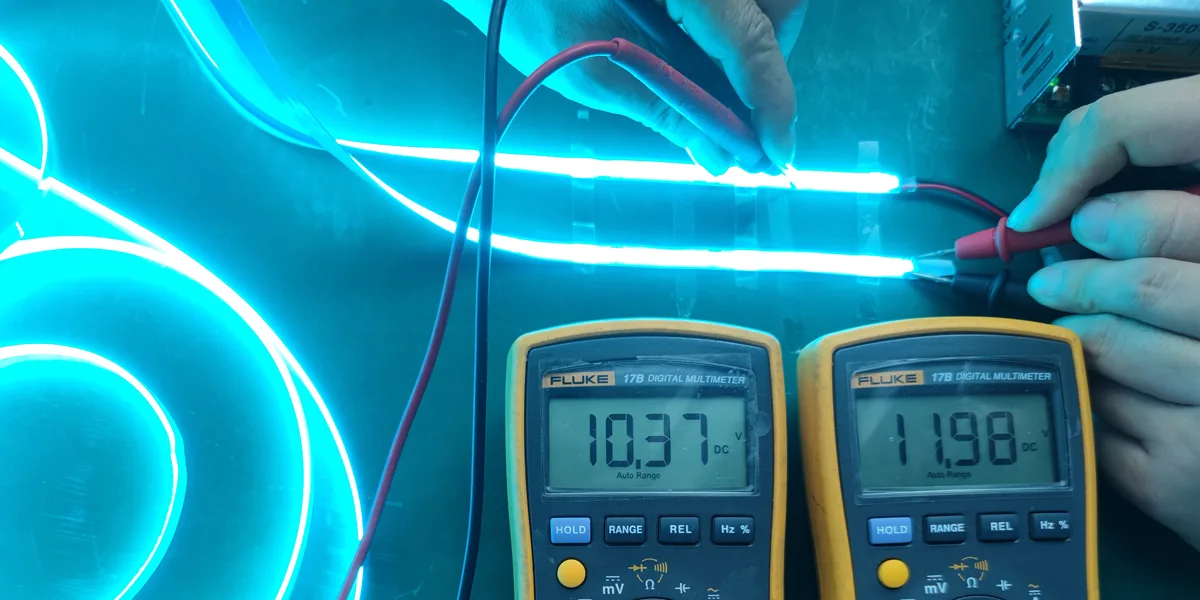
The optimal voltage for LED strips depends on specific project requirements. For smaller projects or shorter runs, 12V LED light strips are suitable. For larger projects or extended runs, 24V strips are recommended to minimize voltage drop and ensure consistent brightness across the entire strip.
If you need to install a continuous, uninterrupted light strip exceeding 10 meters—such as for office light coves, mall perimeter lighting, or extra-long display cases—24V is your best choice. It reduces the number of power access points, simplifies wiring, and guarantees a unified visual effect. For small-scale decorations, such as a compact cabinet, a wine rack, or a display box, with lengths under 5 meters, both 12V LED light strips and 24V strips are suitable, as the voltage drop difference is not significant.
What scenarios are 12V LED ライト strips suitable for?
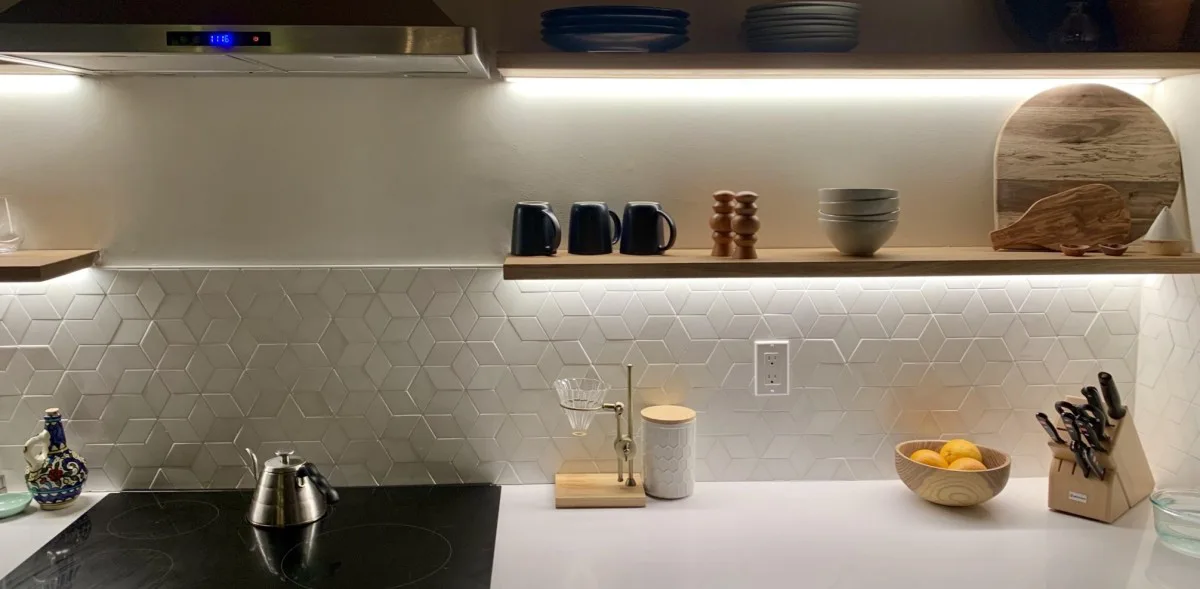
The “minimum cut length” of 12V LED light strip is typically shorter—such as cuts of just 3 LEDs—which may offer a slight advantage in complex designs requiring extremely precise, small-radius bends. They are ideal for the following lighting applications:
- Automotive, RV, and marine lighting: Since these vehicles already provide 12V power, no conversion is needed.
- Small, intricate DIY or decorative projects, such as computer case mods, miniature model dioramas, or accent lighting for individual furniture pieces.
- Short-length cabinet, wine rack, or bookshelf lighting: Typically under 5 meters in length, allowing for quick installation with minimal cutting.
- Art installations requiring frequent cuts and extremely complex shapes: LED 12V light strips typically have shorter “minimum cut units” (e.g., 3 LEDs per cut), offering advantages for intricate designs with tight curves and precise bending.
What scenarios suit 24V LED strips?

24V light strips feature lower resistance and generate less heat. Lower operating temperatures mean LEDs and electronic components function in a more favorable environment, slowing light decay and naturally extending lifespan. Ideal for lighting scenarios requiring:
- Commercial space illumination: e.g., indirect lighting coves in offices, malls, hotels, and restaurants. Demands long-distance coverage, seamless continuity, and uniform brightness.
- Ultra-long display case lighting: Jewelry counters, museum exhibits, retail apparel displays. Ensures consistent illumination of merchandise to highlight quality.
- Architectural outline lighting: Building facade illumination and advertising signage. Suitable for long distances and complex environments, where 24V effectively counters voltage drop and reduces failure points.
- Projects demanding extreme longevity and stability: 24/7 convenience stores, factory assembly line lighting, etc.
- Projects seeking to reduce total cost of ownership: Optimizes overall budget by saving on wiring, reducing power supply quantities, and minimizing installation labor.
Why Choose 24V LED Strip Lights?
- Cable Cost: Due to the lower current in 24V systems, thinner gauge wiring can be used for the same transmission distance and power output. This translates to significant savings on low-voltage cable procurement and easier installation.
- Power Supply Cost: 24V power supplies may be slightly cheaper per unit than 12V ones. A single 24V supply can power longer strips, reducing the total number of required power supplies and lowering overall power supply costs.
- 設置の複雑さ: With 24V strips, fewer power connections are needed due to their longer individual lengths. This results in simpler wiring, saving both labor and time costs.
Supplement: High-Voltage AC 110/220V LED Strip Lights
While this article focuses on low-voltage systems, it’s important to note the existence of high-voltage 110/220V strip lights. Through specialized encapsulation, these can be directly connected to 110/220V AC power.
メリット: Minimal voltage drop, with individual strips reaching up to 100 meters! Ideal for ultra-long distances and applications demanding installation convenience, such as building facades and large outdoor billboards.
デメリット: Installation requires professional electrical knowledge, carries electric shock risk, cannot be arbitrarily cut, offers limited flexibility, and may exhibit more noticeable LED graininess.
Key Considerations for LED Strip Purchasing
- Match the correct driver power supply: The output voltage of the 電源 must match the strip’s voltage! Pair 12V LED light strips with 12V power supplies and 24V light strips with 24V power supplies. The power supply capacity should be 1.2-1.3 times greater than the strip’s total power consumption to allow for margin.
- Cable cross-sectional area: Even in 24V systems, calculate and select the appropriate wire gauge (AWG value) for long transmission distances—do not prioritize thin cables indiscriminately.
- Controller and dimming system compatibility: If dimming or color control is required, ensure the controller (e.g., DMX512 decoder, TRIAC dimmer, 0-10V controller) supports the voltage of your chosen light strip.
- Professionalism: A reputable supplier should proactively inquire about your project specifics and provide comprehensive solutions—including voltage recommendations—rather than merely quoting prices.
結論
In the detail-driven realm of LED lighting, knowledge is both power and profit. For the vast majority of projects, selecting 24V LED light strips translates to more stable performance, extended lifespan, lower overall costs, and superior light output. This has gradually become the industry standard and consensus.
We hope this comprehensive guide serves as a powerful decision-making tool for you. If you have specific project drawings or lighting requirements, feel free to contact our team of technical experts. We offer end-to-end support—from voltage selection and product matching to solution implementation—ensuring every project shines brilliantly!
